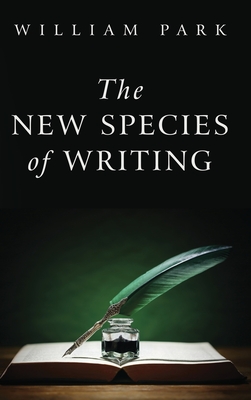The New Species of Writing

The New Species of Writing
William Park received his undergraduate degree from Princeton University and his doctorate in English and Comparative Literature from Columbia University. He has taught at Hamilton College, Columbia, the University of Navarre, and for thirty-eight years at Sarah Lawrence College, where he also co-founded the Film Studies program. Professor Park has published numerous articles on literature and film, and his books include The College Anthology of English and American Poetry, The Idea of Rococo, Newman on the Bible, Hollywood: An Epic Production, and What Is Film Noir? He and his wife Sylvia Thompson currently live in Santa Cruz, California, where he teaches literature and film at UCSC's Osher Lifelong Learning Institute.
This book joins Park's seven published articles on the mid-eighteenth-century English novel. Although novels existed before 1740, it was only with the publication of Richardson's Pamela that contemporary critics and readers became conscious of "a new species of writing." But whereas historians of the novel tend to regard the works of Richardson and Fielding as prototypes which evolved into the modern novel, Park's essays argue that mid-eighteenth-century English novels were instead instances of the first type of novel--with its own conventions and worldview. This book contains studies of the two great masterpieces of the period, Richardson's Clarissa and Fielding's Tom Jones. The essay on Sterne's Tristram Shandy describes how that work was the link to yet a second type: the sentimental novel. The book concludes with an essay describing the relationship between these novels and the dominant artistic style of the first half of the eighteenth century, the Rococo.
PRP: 126.79 Lei
Acesta este Pretul Recomandat de Producator. Pretul de vanzare al produsului este afisat mai jos.
114.11Lei
114.11Lei
126.79 LeiLivrare in 2-4 saptamani
Descrierea produsului
William Park received his undergraduate degree from Princeton University and his doctorate in English and Comparative Literature from Columbia University. He has taught at Hamilton College, Columbia, the University of Navarre, and for thirty-eight years at Sarah Lawrence College, where he also co-founded the Film Studies program. Professor Park has published numerous articles on literature and film, and his books include The College Anthology of English and American Poetry, The Idea of Rococo, Newman on the Bible, Hollywood: An Epic Production, and What Is Film Noir? He and his wife Sylvia Thompson currently live in Santa Cruz, California, where he teaches literature and film at UCSC's Osher Lifelong Learning Institute.
This book joins Park's seven published articles on the mid-eighteenth-century English novel. Although novels existed before 1740, it was only with the publication of Richardson's Pamela that contemporary critics and readers became conscious of "a new species of writing." But whereas historians of the novel tend to regard the works of Richardson and Fielding as prototypes which evolved into the modern novel, Park's essays argue that mid-eighteenth-century English novels were instead instances of the first type of novel--with its own conventions and worldview. This book contains studies of the two great masterpieces of the period, Richardson's Clarissa and Fielding's Tom Jones. The essay on Sterne's Tristram Shandy describes how that work was the link to yet a second type: the sentimental novel. The book concludes with an essay describing the relationship between these novels and the dominant artistic style of the first half of the eighteenth century, the Rococo.
Detaliile produsului








